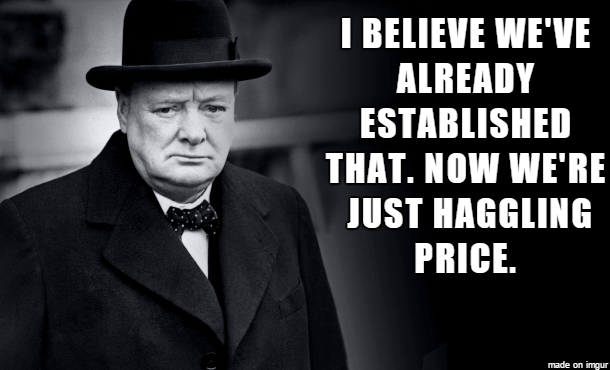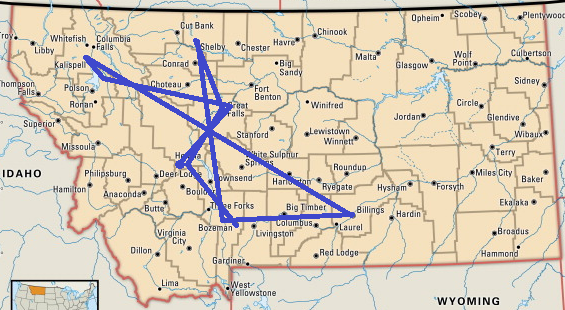
These range from the fire and police departments all the way to the parking commission, human resources, the cemetery and animal control.
When you identify a department you want to look into it’s very simple to go to the city’s 372-page budget, use a ‘Ctrl+F’ search, and find every instance of that department and their spending.
Let’s dig into two of these departments today, as well as one division.
The Missoula City Cemetery
So for the cemetery I find that in 2017 they want:
- $314,000 for cemetery care
- $90,000 for a cremation wall
- $45,000 for a mower
- $15,000 for a plotter
- $9,000 for a cemetery memorial
- $5,000 for a plotter
- $2,500 for overtime increases
Those things come out to just over $480,000.
So these costs really add up. They’re a far cry from the $1 Missoula paid to take over the cemetery in 1901, that’s for sure!
Back when the cemetery first started in 1884, it was 16 acres. Today it’s up to 80 acres: 40 developed and 40 undeveloped.
The cemetery has 8.9 full-time workers, and the reason for that is the intermittent laborers and seasonal maintenance tech’s don’t work all week.
This is roughly the same number of workers the cemetery has had since 2014.
A major recent expenditure of the cemetery was getting a new snowplow to replace the one from 1992.
This cost about $6,000, as the cemetery used one of its trucks and just put a plow on the front.
I like how they saved money that way, as opposed to buying a fancy new truck.
Another big one was replacing a pump from 1970 with a new submersible pump. That one was a bit more expensive, at $68,000.
I don’t have a lot of problems with the cemetery, though I do disagree with their latest revenue-generating plan.
That consists of making and selling their own headstones, something that cuts in on local cemetery businesses.
I sent letters to two of those businesses telling them that I think it’s a shame what the city’s doing.
No campaign donations came back, but I did get one letter telling me that they’re happy I agree with them.
Public Works
That comes out to $16.3 million for 2017.
Only Public Safety (22.2% and $31.1 million) and Transfers Out (21% and $29.2 million) are larger.
$6.7 million of the Public Works budget comes from the city’s general fund.
The general fund has $57 million in it, all budgeted out for the various departments.
When we dig into the Public Works Department we see they want:
- $760,000 for Personal Services
- $165,000 for Purchased Services
- $103,000 for Supplies
- $1,433 for snow removal overtime
That comes out to over $1 million for all that.
The Public Works Department currently has 8.5 full-time workers, which is the same as they had in 2014.
Those 8 workers oversee 383 miles of street and spend:
- 2,600 hours a year painting lines on streets
- 2,440 hours a year maintaining traffic signals
- 2,000 hours a year maintaining traffic signs
- 1,680 hours a year maintaining fleet radios
- 1,020 hours a year installing fleet radios
That comes out to 405 days worth of time.
What I find a bit alarming is that 100 more hours a year are spent fiddling about with radios than are spent painting street lines.
I’m sure if you’ve driven down Orange Street or some of the downtown streets you know that the painted lines from last year are completely gone.
That must wreak havoc with out-of-town drivers, and the in-town drivers that have to put up with them.
I had it the other day where I drove into a turnout lane because there were no lines marking it – they’d faded away.
Within the department is the Streets Maintenance Division.
This is a tricky thing with city government – there are divisions within departments, and they have their own staff.
The Public Works Department has 5 divisions:
- Storm Water Division
- Street Maintenance Division
- Traffic Services
- Traffic Signal & Communication Shop
- Wastewater Division
All of these places have workers.
For instance, the Streets Maintenance Division has 29.5 full-time employees, which is an increase of 1 from 2014.
This division’s budget is actually larger than the department that oversees it.
- $2.2 million for Personal Services
- $475,000 for Supplies
- $105,000 for Capital Outlay
- $93,000 for Debt Service
- $56,000 for Miscellaneous
That comes out to just under $3 million.
So what does this division do?
- 3,000 hours will be spent in 2017 patching potholes, and that’ll cost $340,000, or $113 per hour.
- 250 hours will be spent maintaining alleys, and that’ll cost $89,000, or $90 per hour. A big expense this year is the 2,300 loads of asphalt laid in order to grade 200 miles worth of alleys at a cost of $448 per mile.
- 5,000 hours will be spent cleaning streets, with 800 loads expected to be hauled to Allied Waste. This’ll cost the city $893,000, or $186 per hour, with an average of 17 miles swept per day.
- 2,500 hours will be spent removing leaves, with 1,200 loads delivered to EKO Compost at a cost of $285,000, or $95 per hour or $237 per load.
- Aside from that, 500 loads of sand will be used on our streets in 2017, 2,000 tons of sand will be collected, and 170,000 gallons of deicer will be applied.
Conclusion
What I find disturbing is that just $340,000 a year is spent fixing potholes.
I bet if you asked most Missoulians they’d say that’s a big priority.
And yet the city doesn’t treat it like a priority.
You know from my reporting that we’re spending a lot more money on things we don’t need.
- $7 million for mall developers
- $4 million for the Reserve Street ‘Pedestrian’ Bridge
- $3 million to buy EKO Compost
That’s $14 million right there, or 41 times what we spend fixing our streets.
In regards to EKO Compost, you saw that the city was spending $285,000 a year to deliver dead leaves to them.
Now the city owns that business and won’t have to pay that, just the upkeep costs of running the place.
Heck, the way the city runs things that might end up costing us more.
I really do think the city’s priorities are messed up.
I really don’t think those priorities will change anytime soon.
I’m sorry that Missoula is in such a messed-up state right now.
Hopefully it’ll change…some day.




















